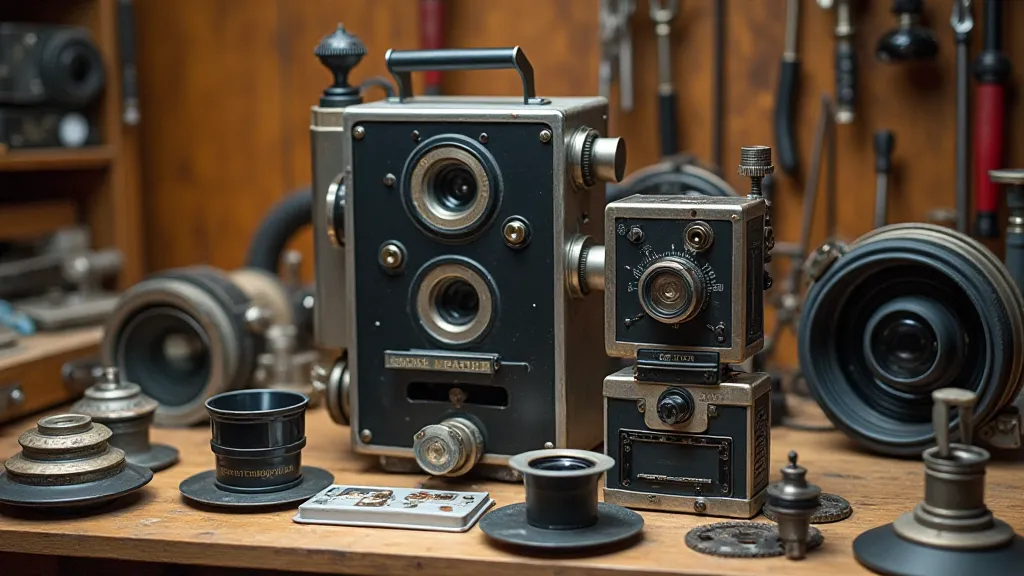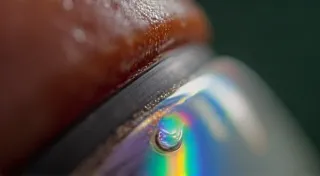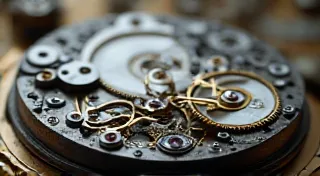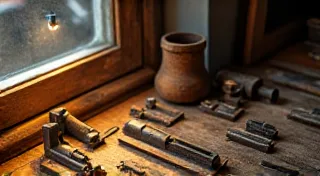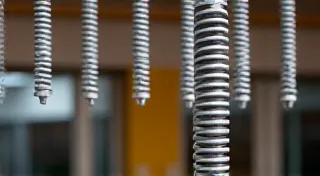Beyond the Manual: Uncommon Carousel Projector Modifications and Hacks
The hum of a carousel projector. The gentle whir of the carousel advancing slides. It’s a sound freighted with nostalgia, a whisper of a time when photographic memories were meticulously preserved and lovingly projected. But these machines, often dismissed as simple gadgets, were also objects of ingenuity, tinkered with and modified by their owners to achieve specialized effects or overcome limitations. This isn't just about fixing a lamp or replacing a fuse; it's about understanding the spirit of resourceful craftsmanship that imbued these projectors.
My own fascination began with a Kodak Carousel I inherited from my grandfather. He wasn’t a professional photographer, just a man deeply invested in capturing moments with his family. I later discovered that he’s carefully altered the slide advance mechanism. It was a subtle modification, almost invisible at first glance, but it dramatically slowed the rotation, allowing him to better appreciate the details in each image. It wasn't something documented in the manual; it was a personal touch, a testament to his desire to savor those precious memories.
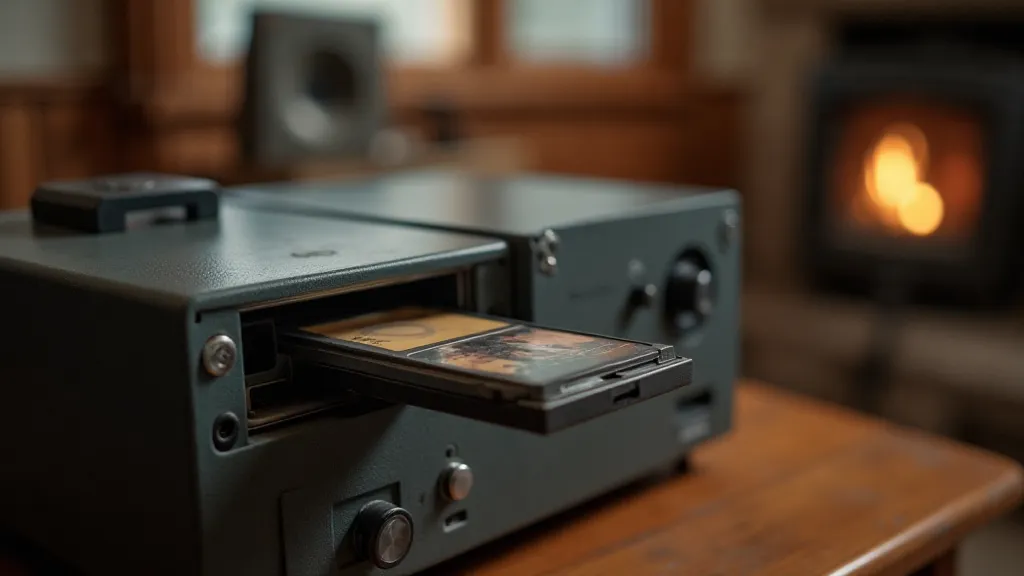
The Rise of the "Special Purpose" Projector
The late 1950s and 60s were a golden age for slide projection. While Kodak’s Carousel popularized the format, other manufacturers like Graaflex, NuOptra, and Savage-Holtz were pushing the boundaries of technology. This competition fostered a culture of innovation, but it also meant that users were increasingly resourceful in adapting these devices. Why settle for a standard projection when you could achieve something extraordinary?
Consider the world of scientific and medical imaging. Researchers often needed to project microscopic slides with exceptional clarity and detail, demanding modifications to the lamp housing, focusing lenses, and even the carousel's internal mechanics. One common hack involved replacing the standard lamp with a higher-wattage model, carefully calculating the risk of overheating and lamp burnout. This often extended beyond simple wattage adjustment, involving careful realignment of reflectors and condensers to ensure even illumination and prevent hot spots. Achieving this kind of image quality required a deep understanding of the geometry of projection and optics, turning users into amateur engineers.
Similarly, the burgeoning world of amateur cinema saw the emergence of "slow-motion" projection techniques. By mechanically slowing the carousel's rotation, users could create a visual effect akin to slow motion, transforming everyday scenes into mesmerizing studies of movement. This often involved complex gear modifications and a healthy dose of trial and error. Achieving consistent results meant a detailed understanding of how even minute adjustments could impact the overall projection quality. To ensure a smooth and finely tuned projection, some even delved into the intricacies of a rhapsody in gears to meticulously fine-tune the carousel rotation mechanism.
The Art of Lens Customization
The projector’s lens assembly was a particularly fertile ground for modification. The standard lenses, while adequate for general use, often lacked the sharpness or contrast required for specialized applications. Some users meticulously ground and polished their own lenses, a painstaking process demanding precision and a keen eye for detail. The results, though often imperfect by modern standards, were often a source of immense pride and a tangible demonstration of ingenuity. To achieve optimal results, however, a thorough understanding of light and its behavior – encompassing principles of diffraction and refraction – was crucial.
Another common modification involved swapping out the original lens with a higher-quality photographic lens. This was a more expensive option, but it could dramatically improve the image quality, particularly for photographers who also used their projectors to display their prints. Beyond simply replacing the lens, it often required adapting the mounting system and adjusting the focus mechanism to ensure compatibility.
Beyond the Mechanics: The Aesthetics of Modification
Modifications weren’t always about performance; sometimes, they were purely aesthetic. Projector owners would personalize their machines with custom paint jobs, engraved plates, and even elaborate woodwork. These modifications transformed the projectors from utilitarian devices into works of art, reflecting the owner’s personality and style.
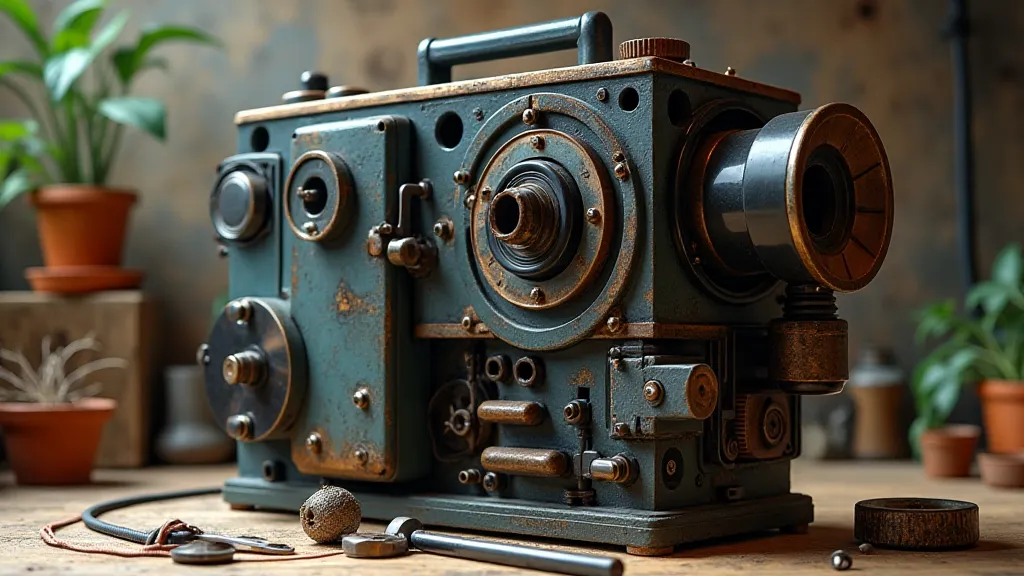
I’d once encountered a carousel projector, a Savage-Holtz model, completely clad in exotic wood veneer. It was a stunning example of craftsmanship, a testament to the owner’s dedication to creating something truly unique. The original metal body was barely visible beneath the layers of meticulously applied wood. Ensuring the veneer didn't interfere with the projector’s functionality required an even deeper understanding of its internal workings, showcasing the owner’s holistic approach to customization.
The Challenges of Restoration and Documentation
Restoring a modified carousel projector presents unique challenges. Identifying the original configuration is often impossible, and undoing the modifications can be difficult or even irreversible. It’s a delicate balancing act between preserving the originality of the machine and respecting the ingenuity of the original modifier. Sometimes, even seemingly minor adjustments could have cascading effects on other components, making diagnosis and correction a complex puzzle. Often, maintaining a stable and consistent image required careful attention to the luminescence of memory, which itself could be affected by any modifications made to the lamp or projection system.
Moreover, the lack of documentation is a significant hurdle. These modifications were often undocumented, passed down through generations of collectors or lost to time. The only clues to the original intent are often found in the physical evidence – a carefully filed gear, a precisely placed shim, a uniquely shaped lens mount. Recreating these undocumented changes can sometimes involve a detective-like process, piecing together clues and making educated guesses based on the available evidence.
The Often-Overlooked Problem of Premature Bulb Failure
Beyond the visual enhancements, many modifications unintentionally impacted bulb longevity. Increased wattage lamps, while producing brighter images, invariably shortened bulb life. Even seemingly minor adjustments to the lamp housing could alter ventilation and temperature regulation, leading to premature failure. The challenges in diagnosing these issues were compounded by the often-modified electrical systems, requiring a nuanced understanding of circuitry and thermal management. This often led to frustrating cycles of modification and troubleshooting, as owners sought to balance brightness with bulb life.
Addressing Illumination Issues in Modified Systems
Diagnosing problems in highly modified projectors proved a unique exercise. A flickering or dim image could stem from a multitude of sources – a faulty capacitor, a misaligned lens, or even a subtle vibration affecting the slide advancement mechanism. Discerning the root cause demanded a systematic approach, often involving careful observation, measurement, and elimination of potential causes. Furthermore, troubleshooting could be complicated by the fact that some modifications might interact with each other, creating unexpected problems. Ultimately, success often hinged on a combination of technical expertise and a healthy dose of intuition – the ability to "read" the machine and understand its subtle cues. If you find yourself battling a persistently dim or intermittent image, delving into a symphony of shadows - carefully examining every aspect of the illumination system - can often reveal the hidden cause.
Lessons from the Past: A Legacy of Resourcefulness
These uncommon modifications and hacks offer a fascinating glimpse into the spirit of resourcefulness and craftsmanship that characterized the golden age of slide projection. They remind us that these machines were more than just gadgets; they were objects of personal expression, tools for creative exploration, and symbols of a time when innovation thrived on ingenuity and a willingness to tinker. Each modification tells a story - a silent testament to the owner’s passion, skill, and desire to go beyond the manual.
As we continue to restore and preserve these vintage treasures, we owe it to those who came before us to appreciate and understand the ingenuity that shaped them. Perhaps, by studying these modifications, we can not only learn about the past but also find inspiration for our own creative endeavors. The hum of the carousel isn’t just a sound of nostalgia; it’s a reminder that even the simplest machines can hold within them a world of innovation and artistry.
